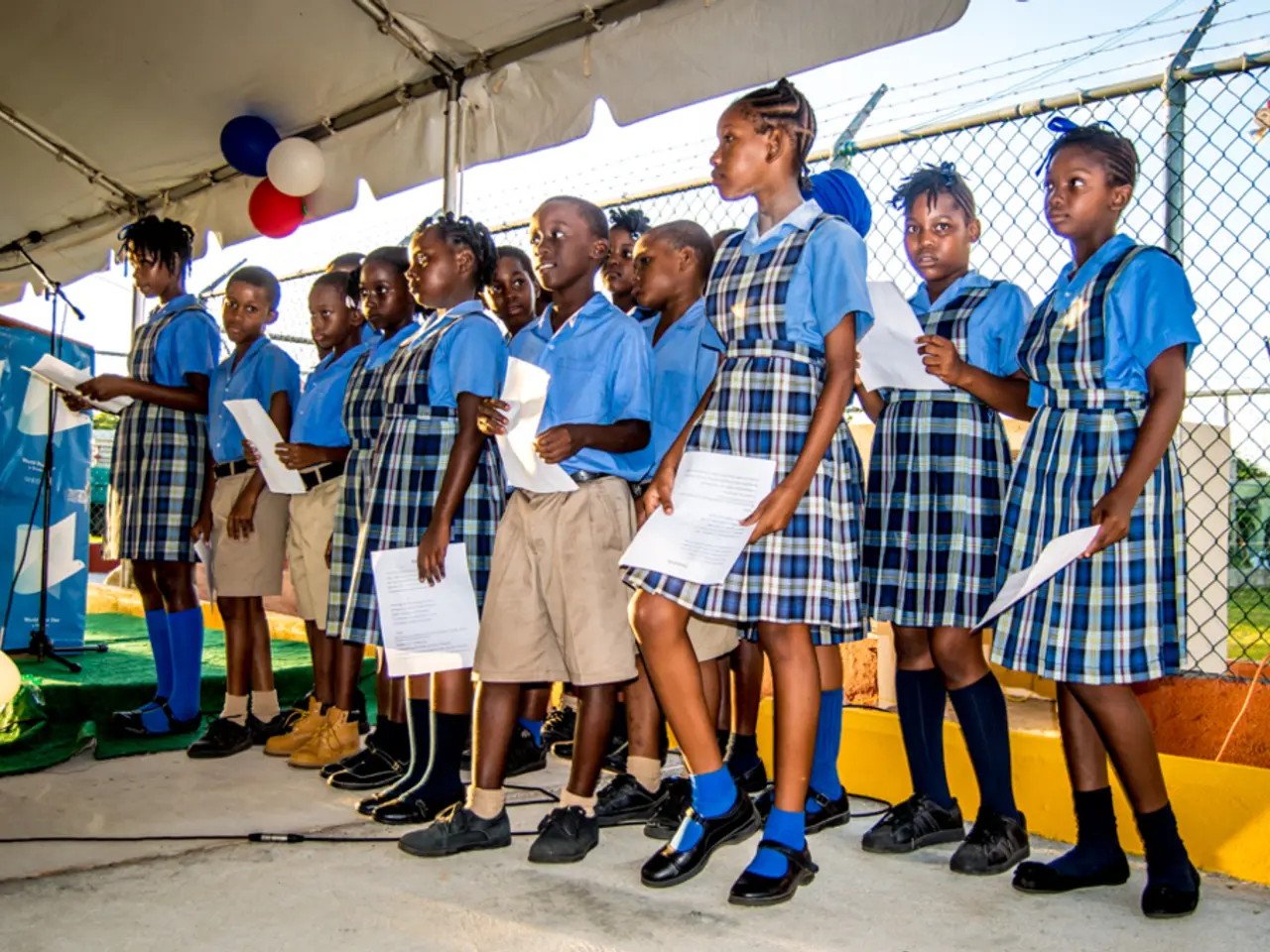Young Gaza resident, aspiring medical professional, struggles to survive instead of pursuing his dream of becoming a doctor.
The education system in Gaza is currently in a state of catastrophe, with over 650,000 students having no access to education since the conflict began in October 2023. This includes nearly 40,000 students who were unable to take university entrance exams for the first time in decades, severely limiting their career prospects.
The massive destruction of educational infrastructure is a key factor in this dire situation. Over 95% of Gaza's schools have been partially or totally destroyed, and all 12 universities in Gaza have been demolished or heavily damaged. This destruction is described as 'scholasticide'—a targeted, systematic effort resulting in the collapse of Gaza's education system through physical destruction, killings of students and educators, and disrupting learning processes.
Displacement and overcrowding are also significant issues. Schools were initially turned into shelters for displaced families, forcing many children to give up schooling and help their families survive. The complete Israeli blockade, only slightly eased months later, has pushed Gaza toward famine, further undermining families' ability to engage with education.
During a six-week ceasefire in early 2025, around 600 learning spaces operated and reached approximately 173,000 children. However, nearly half of these have since shut down after hostilities resumed. UN agencies like UNICEF and UNRWA have set up some temporary learning centers and provided psychosocial support and digital tools, reaching tens of thousands of children. But these efforts only partially mitigate the crisis.
The war in Gaza has resulted in the death of over 57,000 Palestinians, according to Gaza's Health Ministry. Israel's bombardment and ground operations have killed tens of thousands of Palestinians and displaced 90% of Gaza's population. Today, many Palestinians like Sarah Qanan, an 18-year-old from Khan Younis, are struggling to stay alive in sweltering tents in the Gaza Strip. Sarah was a high school student preparing for final exams with dreams of becoming a doctor two years ago.
For older students, advanced subjects, graduation exams, and college applications have all been put on hold. Nesma Zouaroub, a mother of four school-age children, said her youngest son should be in second grade but does not know how to read or write. Ola Shaban, a student trying to continue her civil engineering studies online, had to give up due to lack of Internet, continuous displacement, and the constant sense of fear.
As of the current date, Hamas is still holding 50 hostages, with less than half believed to be alive. The UN and other international organizations use the figures from the Hamas-led government's Health Ministry as the most reliable statistics on war casualties.
In Gaza, some students have tried to continue their studies through online learning, but it's not easy due to the lack of central electricity, unreliable Internet, and limited access to charging devices. The closure of schools has removed a key social outlet for young people in Gaza, and for younger children, it has meant missing out on basic skills like reading and simple arithmetic.
With prospects for recovery highly uncertain given the scale of destruction and continuing conflict, the future of Gaza's education system and the next generation of Palestinian students hang in the balance.
[1] UNICEF: Over 650,000 students have no access to education since the start of the war. [2] UNESCO: Over 95% of Gaza's schools have been partially or totally destroyed. [3] Human Rights Watch: The destruction in Gaza amounts to scholasticide. [4] UNRWA: Temporary learning centers and psychosocial support have been provided to tens of thousands of children.
- The education-and-self-development sector in Gaza is in a catastrophic state due to the ongoing conflict, with over 650,000 students lacking access to education since October 2023, according to UNICEF.
- The destruction in Gaza is so severe that over 95% of schools have been partially or completely ruined, as reported by UNESCO.
- This calculated destruction of educational infrastructure is being referred to as 'scholasticide' by Human Rights Watch, indicating a deliberate and systematic effort to collapse Gaza's education system.
- Though UNRWA has established temporary learning centers and offered psychosocial support and digital tools to numerous children in Gaza, these efforts only offer a limited solution to the crisis.
- Amidst the turmoil of war-and-conflicts and the morass of politics, the future of Gaza's education system and the next generation of Palestinian students hangs precariously in the balance.




